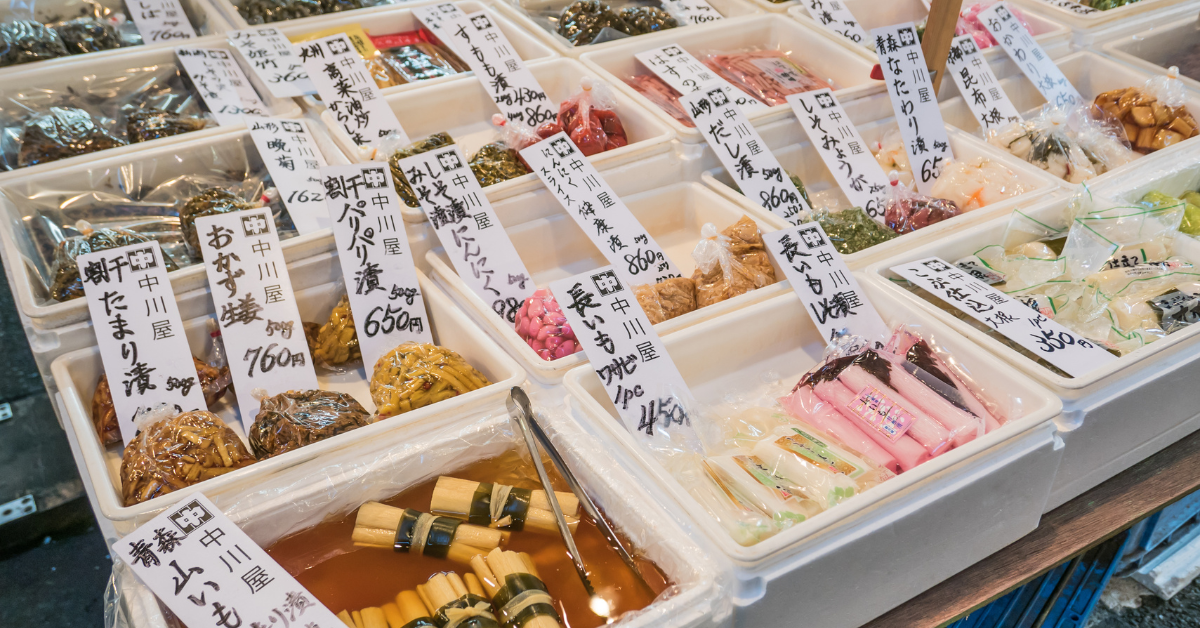Tsukiji Outer Market is one of Tokyo’s most iconic food destinations. For Japanese people, it is a special place to enjoy fresh seafood and experience the unique energy of a traditional market. In this article, we share real impressions from Japanese visitors and highlight key points foreign travelers should know to enjoy the market more deeply.
The Charm and Atmosphere of Tsukiji Outer Market
Often called the “treasure house of food”, Tsukiji Outer Market is a bustling area packed with shops and restaurants. The moment you step inside, the smell of fresh fish, the sound of cooking, and the lively voices of vendors create a unique atmosphere.
Japanese visitors often comment: “The energy of the market gives me strength” or “It’s fun to experience an atmosphere I can’t find in daily life.” For foreign travelers, Tsukiji is not only a place to eat—it is a stage where Japanese culture comes alive.
The Joy of Food Stalls and Street Eating
One of the market’s biggest appeals is street food. Visitors can try a variety of small dishes such as sushi, seafood bowls, grilled fish, tamagoyaki, skewers, and seasonal fruits. Many Japanese people emphasize the “fun of sharing small bites with friends and family”.
| Popular Food | Japanese Impressions |
|---|---|
| Sushi | Fresh, high-quality flavor comparable to specialty shops |
| Tamagoyaki (Japanese omelet) | Sweet and fluffy, a perfect balance |
| Seafood Bowl | Generous portions that boost the travel mood |
| Dried Fish | Fun to sample before buying |
| Fruits | Seasonal freshness you can taste |
What Japanese People Value Most
Japanese visitors highly value several aspects of Tsukiji Outer Market.
| Key Point | Details |
|---|---|
| Freshness | Seafood and vegetables are exceptionally fresh—“You can taste the difference instantly” |
| Atmosphere | The sound of vendors and cooking captures the market’s essence |
| Cultural Experience | Watching traditional cooking methods and skilled craftsmen at work |
| Tourism | A place Japanese people proudly show to friends and family |
These points help foreign travelers understand why Japanese people see the market as more than just a dining spot.
Key Points for Foreign Visitors
For foreign tourists, Tsukiji Outer Market is a “crossroads of culture.” Many Japanese recommend visiting in the early morning, when the market shows its authentic face. Some also say: “Walking with foreign friends sparks natural conversation,” showing that the market also serves as a place of international exchange.
By following Japanese impressions, travelers can discover unique ways to enjoy the market.
| What to Notice | Japanese Perspective |
|---|---|
| Early Morning | See chefs preparing fish and real market activity |
| Street Eating | The joy of trying many small bites together |
| Shopping | Dried fish and condiments are popular souvenirs |
| Human Interaction | Conversations with vendors become travel memories |
Different Experiences by Time of Day
The market shows different faces throughout the day. Japanese people choose the time of their visit depending on what they want to experience.
| Time of Day | Features | Japanese Impressions |
|---|---|---|
| Early Morning | Watch fresh seafood being delivered and prepared | “A special time to feel the market’s real energy” |
| Morning | The busiest hours, best for street food | “The lively atmosphere is fun” |
| Before Noon | Popular restaurants are crowded but worth the wait | “I don’t mind lining up to taste it” |
| Afternoon | Quieter, ideal for shopping | “Perfect time to buy souvenirs” |
Knowing this helps foreign visitors plan their visit and enjoy the market more efficiently.
Conclusion
For Japanese people, Tsukiji Outer Market is a place to rediscover food culture, and for foreign visitors, it is a chance to understand Japan more deeply.
- Taste exceptionally fresh ingredients
- Enjoy a variety of dishes through street eating
- Experience the unique market atmosphere
- Connect with people as part of a cultural exchange
When Japanese people say the market “gives them energy” or “offers a special time,” they capture its true essence. For foreign visitors, experiencing Tsukiji with the same perspective means enjoying more than just food—it means feeling the spirit of Japanese culture.






